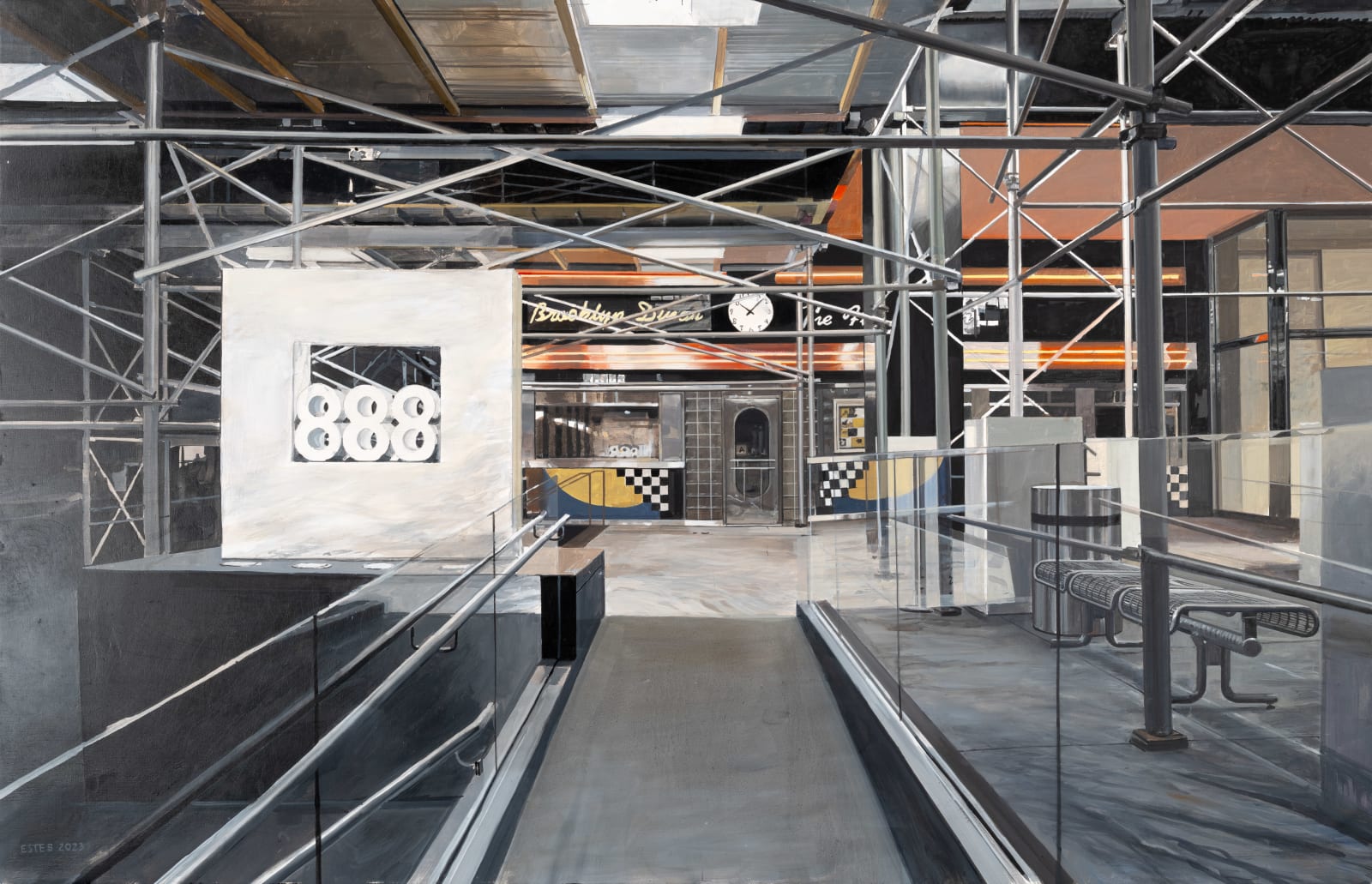Richard Estes American, b. 1932
81.3 x 124.5 cm
Schoelkopf Gallery is the exclusive worldwide representative of Richard Estes.
In a rare nighttime scene, 888 showcases Richard Estes’ remarkable ability to capture the intricate architectural elements, textures, and ambiance of New York City. Estes forged his artistic career in the 1960s, focusing on painting hard-edged portrayals of the New York cityscape—a tradition he continues to uphold today. In the present painting, Estes captures a view of the Brooklyn Diner on 57th Street, situated between Broadway and 7th Avenue in Manhattan. On the left side of the composition, a white marble sculpture serves as an address plaque for 888 Seventh Avenue, the skyscraper that towers above the diner—a building so large it possesses its own ZIP code.
Estes’ fusion of the urban landscape with his distinct brand of realism establishes him as a counterpart to Edward Hopper, the renowned painter of vacant New York scenes. 888's subject, featuring an illuminated diner at night draws parallels to Hopper’s iconic Nighthawks (1942; Art Institute of Chicago). Similar to Hopper’s painting, Estes’ composition is tightly organized. Esteemed art historian John Wilmerding notes, "[Estes] and Hopper will understandably make an ongoing comparison as the two great painters of New York. For all the admiration Estes shows toward his predecessor in his painting, there are revealing differences. Even in its moments of alienation, Hopper's New York is more social and psychological, Estes' more metaphysical. And to be more provocative: Hopper may have left us with better known and memorable single works, repeatedly exhibited and reproduced in the literature, but Estes is the better painter in the sheer practice of his craft." [1]
[1] John Wilmerding, Richard Estes, New York: Rizzoli, 2006, p. 223

